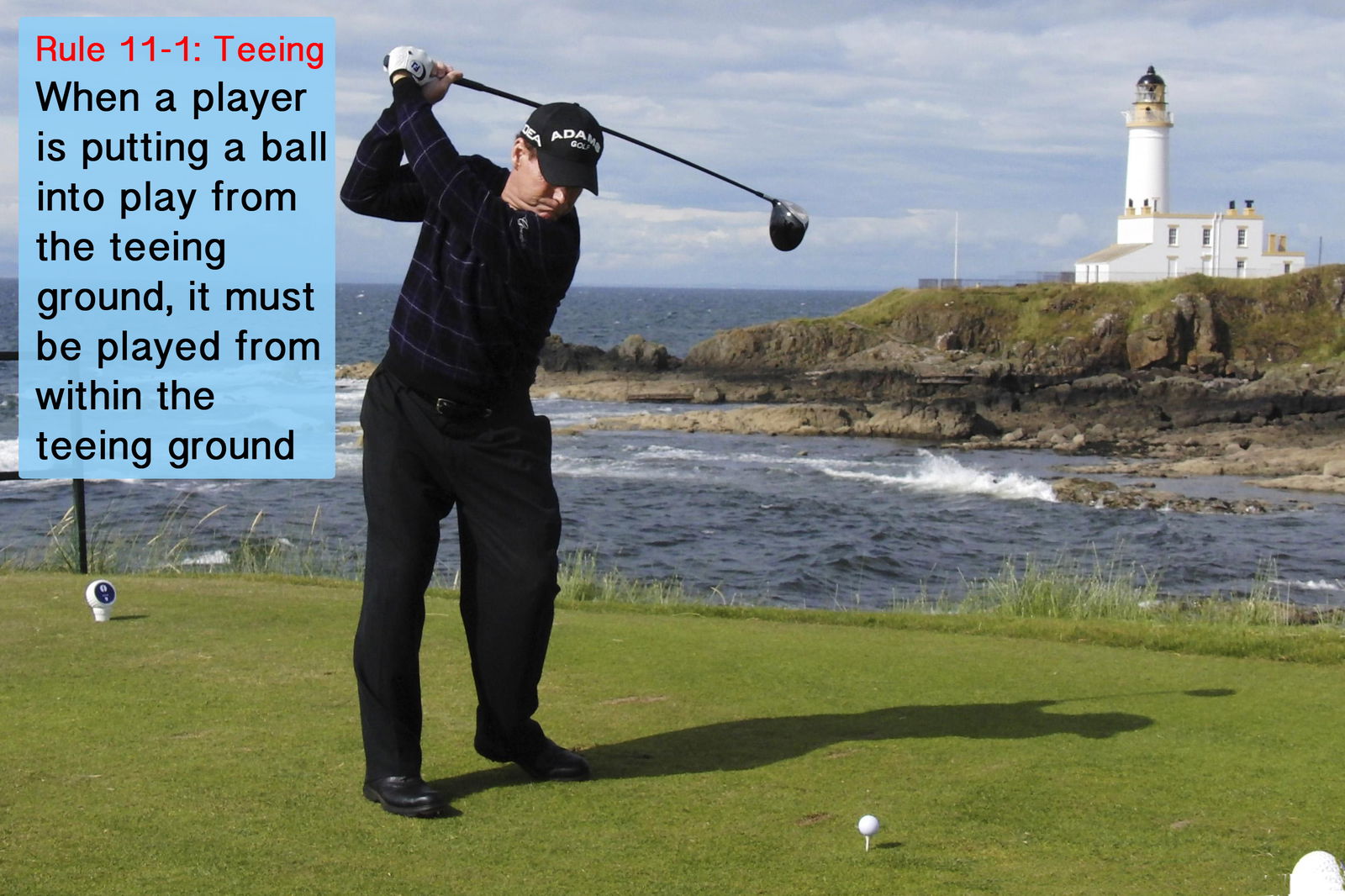Golf Rule 13: Ball played as it lies
Want to know in what situations you may improve your lie? Then check out this rule section

Rule 13: Ball played as it lies
One of the official 34 Rules of Golf.
13-1: General
The ball must be played as it lies, except as otherwise provided in the Rules.
(Ball at rest moved – see Rule 18)
13-2: Improving Lie, Area of Intended Stance or Swing, or Line of Play
A player must not improve or allow to be improved:
the position or lie of his ball,
the area of his intended stance or swing,
his line of play or a reasonable extension of that line beyond the hole, or
the area in which he is to drop or place a ball,
by any of the following actions:
pressing a club on the ground,
moving, bending or breaking anything growing or fixed (including immovable obstructions and objects defining out of bounds),
creating or eliminating irregularities of surface,
removing or pressing down sand, loose soil, replaced divots or other cut turf placed in position, or
removing dew, frost or water.
However, the player incurs no penalty if the action occurs:
in grounding the club lightly when addressing the ball,
in fairly taking his stance,
in making a stroke or the backward movement of his club for a stroke and the stroke is made,
in creating or eliminating irregularities of surface within the teeing ground or in removing dew, frost or water from the teeing ground, or
on the putting green in removing sand and loose soil or in repairing damage (Rule 16-1).
Exception: Ball in hazard – see Rule 13-4.
PENALTY FOR BREACH OF RULE:
Match play – Loss of hole; Stroke play – Two strokes.
13-3: Building Stance
A player is entitled to place his feet firmly in taking his stance, but he must not build a stance.
PENALTY FOR BREACH OF RULE:
Match play – Loss of hole; Stroke play – Two strokes.
13-4: Ball in Hazard; Prohibited Actions
Except as provided in the Rules, before making a stroke at a ball that is in a hazard (whether a bunker or a water hazard) or that, having been lifted from a hazard, may be dropped or placed in the hazard, the player must not:
a) Test the condition of the hazard or any similar hazard;
b) Touch the ground in the hazard or water in the water hazard with his hand or a club; or
c) Touch or move a loose impediment lying in or touching the hazard.
Exceptions:
1. Provided nothing is done that constitutes testing the condition of the hazard or improves the lie of the ball, there is no penalty if the player (a) touches the ground or loose impediments in any hazard or water in a water hazard as a result of or to prevent falling, in removing an obstruction, in measuring or in marking the position of, retrieving, lifting, placing or replacing a ball under any Rule or (b) places his clubs in a hazard.
2. At any time, the player may smooth sand or soil in a hazard provided this is for the sole purpose of caring for the course and nothing is done to breach Rule 13-2 with respect to the next stroke. If a ball played from a hazard is outside the hazard after the stroke, the player may smooth sand or soil in the hazard without restriction.
3. If the player makes a stroke from a hazard and the ball comes to rest in another hazard, Rule 13-4a does not apply to any subsequent actions taken in the hazard from which the stroke was made.
Note: At any time, including at address or in the backward movement for the stroke, the player may touch, with a club or otherwise, any obstruction, any construction declared by the Committee to be an integral part of the course or any grass, bush, tree or other growing thing.
PENALTY FOR BREACH OF RULE:
Match play – Loss of hole; Stroke play – Two strokes.
(Searching for ball – see Rule 12-1)
(Relief for ball in water hazard – see Rule 26)

